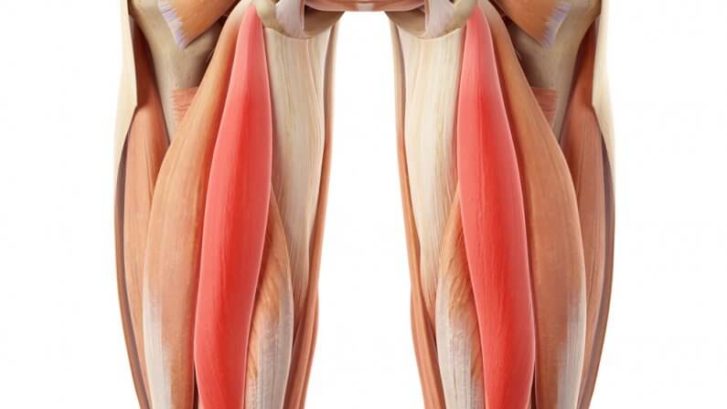Hamstring muscles strain : Assessment & Risk factors
[vc_row][vc_column][vc_column_text]
Hamstring muscle strain injuries are common in sports which required acceleration, deceleration, rapid change in direction.
According to Schache et al 2009 & Heiderscheit et al 2005 Hamstring injuries are proposed to occur during the terminal swing phase of running as a consequence of an eccentric contraction. Sometimes hamstring late firing also contribute to strain.
There are two mechanisms of hamstring injuries. .
- Type 1: high intensity running with the injury occurring during late swing phase involving the proximal musculotendinous junction of the long head of biceps femoris.
- Type 2: stretching of the hamstring complex due to an extreme joint position involving mostly semimembranosus and the proximal tendon.
The majority of hamstring injuries occur at the biceps femoris (BF) long head.
What are the RISK FACTORS?
Many research papers have considered a potential risk factor for hamstring muscles strain injury however other authors inconsistently identified as contributing to the injury.
In addition to that, A systematic review and meta-analysis research said risk factors for hamstring injury
- Older age
- Increase quadriceps peak torque
- Past history of hamstring injury
There are Other strength measures such as hamstring: quadriceps ratio, which is the best commonly perceived to be predictive of injury, were not associated with a hamstring injury (Freckleton & Pizzari, 2013).
CLINICAL ASSESSMENT AND DIFFERENTIAL DIAGNOSIS
Here you can predict the differential diagnosis for hamstring strain injury
- lumbar spine (disc/ facet joint),
- SIJ dysfunction, gluteal/piriformis/Gemelli trigger points,
- Hamstring tendinopathy, avulsion injuries,
- vascular claudication and compartment syndrome (Brukner & Khan, 2006).
The subjective assessment is a key point to correctly diagnose an injury. Players with a hamstring injury will report sudden onset of pain localized to the hamstring region with a clear mechanism or incident. (Pizzari, et al., 2010). A particularly previous hamstring injury is also important of the major risk factors for future hamstring injuries (Freckleton, et al., 2012).
There are some positive clinical signs, and symptoms for hamstring injury (Bennell, et al., 1999):
- Immediate onset of posterior thigh pain,
- Tenderness on palpation,
- Reproduction of pain on a stretch of hamstring,
- Reduced straight leg raise ROM,
- Reduced strength on a resisted active contraction of hamstrings
What should you include in your physical examination ?
- lumbar spine AROM,
- Slump test
- SLR, active knee extension test (AKE),
- passive hamstring muscle stretch and palpation of pelvic musculature for trigger points and reproduction of posterior thigh pain.
- Resisted contraction of the hamstrings should be tested in multiple positions of knee flexion (Brukner & Khan, 2006).
Palpation is the most important aspect of the physical examination to help identify location and severity of the injury (Pizzari, et al., 2010).
A study investigated the use of the single leg hamstring bridge(SLHB) as a clinical test in predicting hamstring injuries in football players. The hamstring muscles in a functional position similar to terminal swing and assesses endurance parameters rather than peak torque.
SLHB test could be used to screen and identify athletes who are potentially at risk of sustaining a hamstring injury. It may be used to evaluate an athlete to return to sport.
REFERENCES :
- Bennell K, Tully E, Harvey N. Does the toe-touch test predict hamstring injury in Australian Rules footballers? Aust J Physiother 1999;45:103–9.
- Brukner, P., & Khan, K. (2006). Clinical sports medicine. McGraw Hill.
- Askling, C., Saartok, T., & Thorstensson, A. (2006). Type of acute hamstring strain affects flexibility, strength, and time to return to pre-injury level. British Journal of Sports Medicine, 40(1), 40-44.
- Croisier, J. L. (2004). Factors associated with recurrent hamstring injuries. Sports Medicine, 34(10), 681-695.
- Freckleton G, Pizzari T. Risk factors for hamstring muscle strain injury in sport: a systematic review and meta-analysis. Br J Sports Med 2013;47:351–8.
- Freckleton, G., Cook, J., & Pizzari, T. (2013). The predictive validity of a single leg bridge test for hamstring injuries in Australian Rules Football Players. British journal of sports medicine.
- De Smet, A. A., & Best, T. M. (2000). MR imaging of the distribution and location of acute hamstring injuries in athletes. American Journal of Roentgenology, 174(2), 393-399.
- Devlin L. Recurrent posterior thigh symptoms detrimental to performance in rugby union: predisposing factors. Sports Med 2000;29:273–87.
- Drezner JA. Practical management: hamstring muscle injuries. Clin J Sport Med 2003;13:48–52.
- Heiderscheit BC, Hoerth DM, Chumanov ES, et al. Identifying the time of occurrence of a hamstring strain injury during treadmill running: a case study. Clin Biomech 2005;20:1072–8.
- Koulouris, G., & Connell, D. (2005). Hamstring Muscle Complex: An Imaging Review1. Radiographics, 25(3), 571-586.
- Orchard J, Marsden J, Lord S, et al. Preseason hamstring muscle weakness associated with hamstring muscle injury in Australian footballers. Am J Sports Med 1997;25:81–5
- Pizzari, T., Taylor, R., & Coburn, P. (2012). The who, where and how.. Understanding hamstring injuries in the AFL. <em>Journal of Science and Medicine in Sport, S143.
- Schache AG, Wrigley TV, Baker R, et al. Biomechanical response to hamstring muscle strain injury. Gait Posture 2009;29:332–8.12
- Schneider-Kolsky M, Hoving J, Warren P, et al. A comparison between clinical assessment and magnetic resonance imaging of acute hamstring injuries. Am J Sports Med 2006;34:1008
- The predictive validity of a single leg bridge test for hamstring injuries in Australian Rules Football Players Br J Sports Med. 2014 Apr;48(8):713-7. doi: 10.1136/bjsports-2013-092356. Epub 2013 Aug 5.
[/vc_column_text][/vc_column][/vc_row]




Leave a Reply
Want to join the discussion?Feel free to contribute!